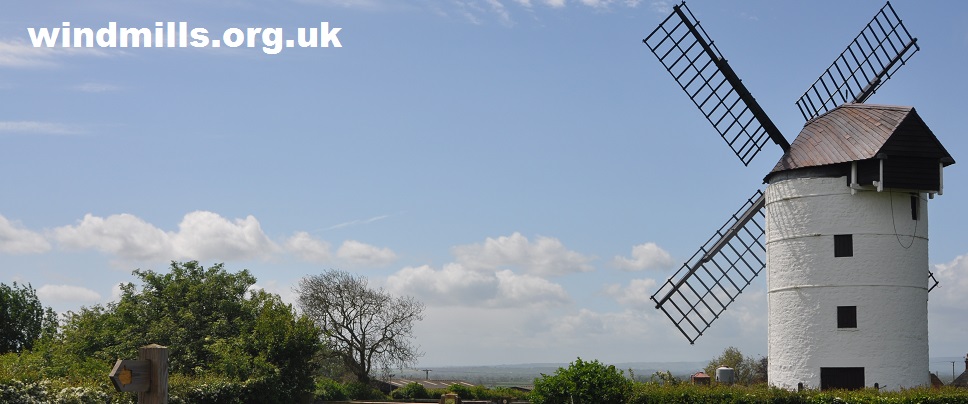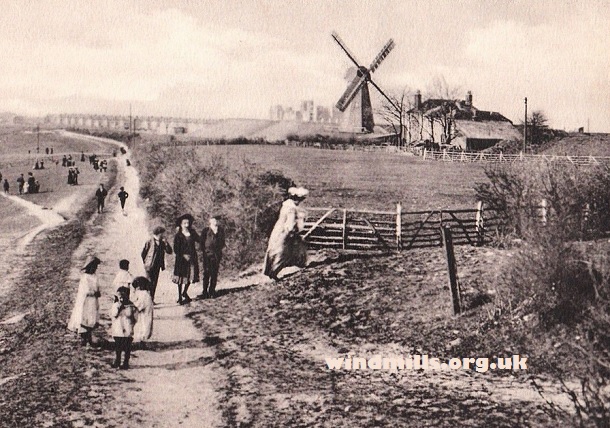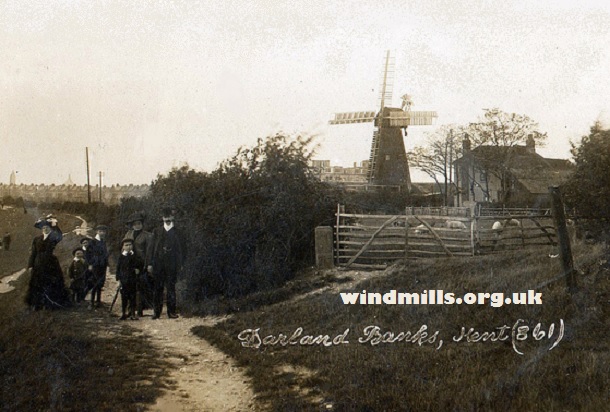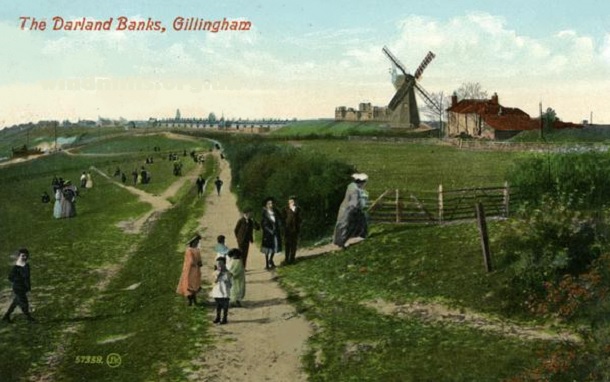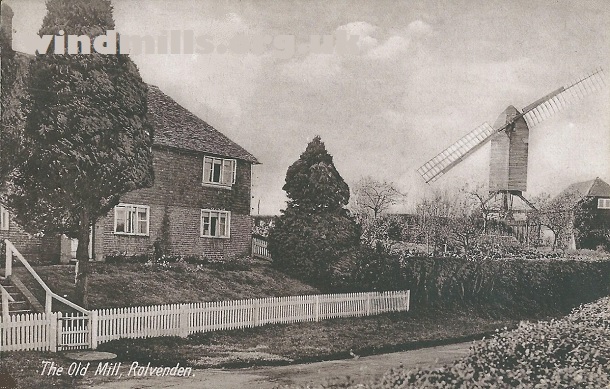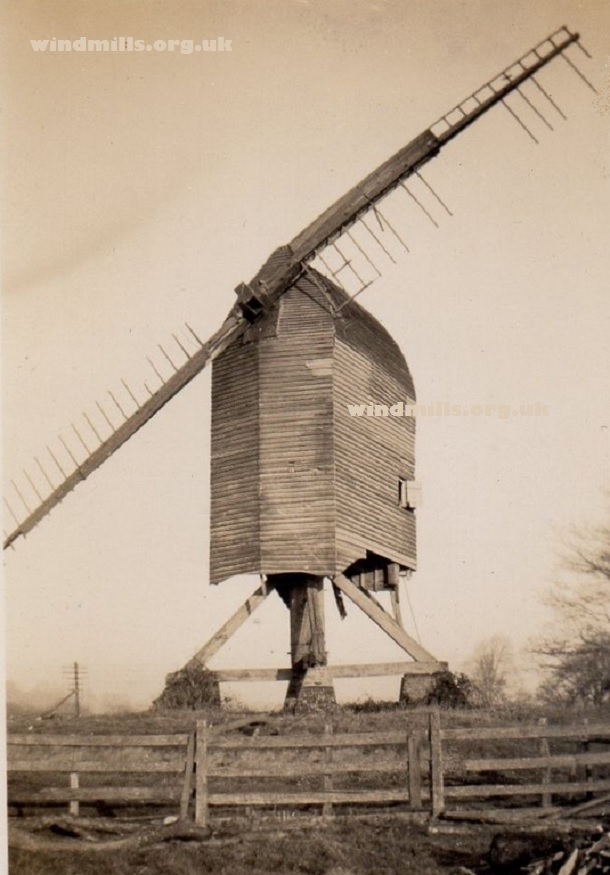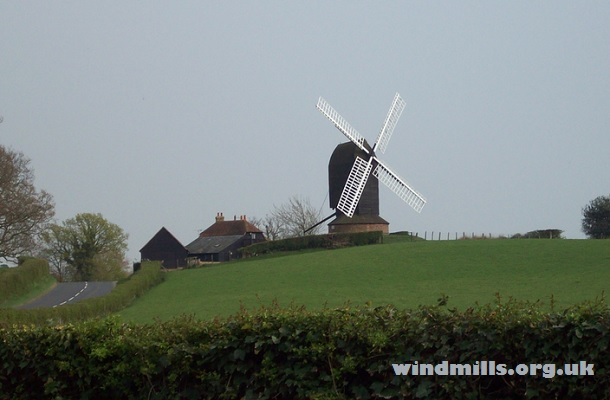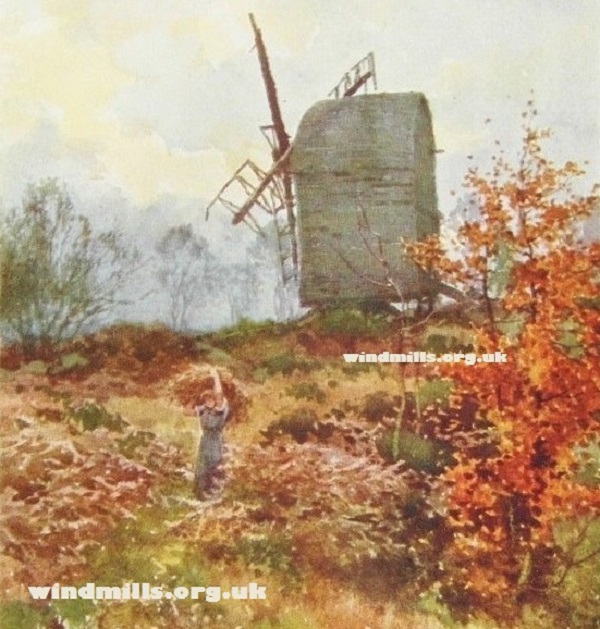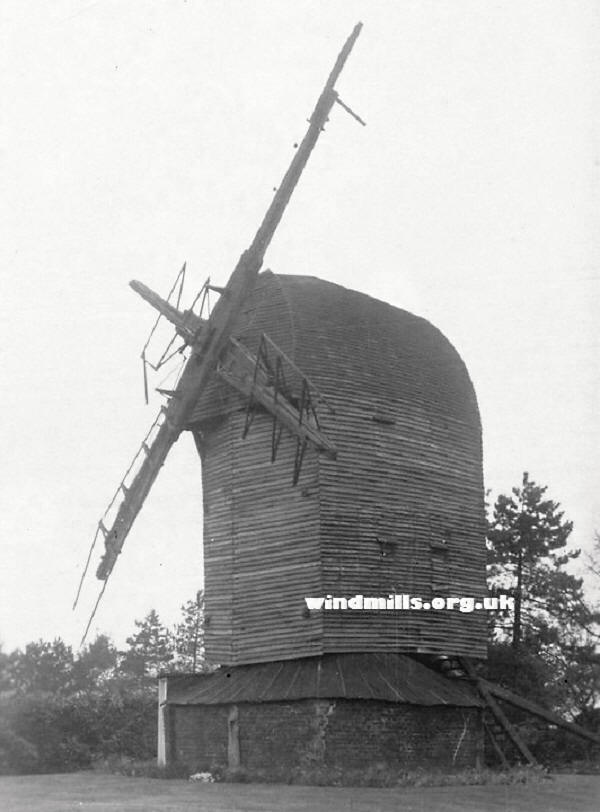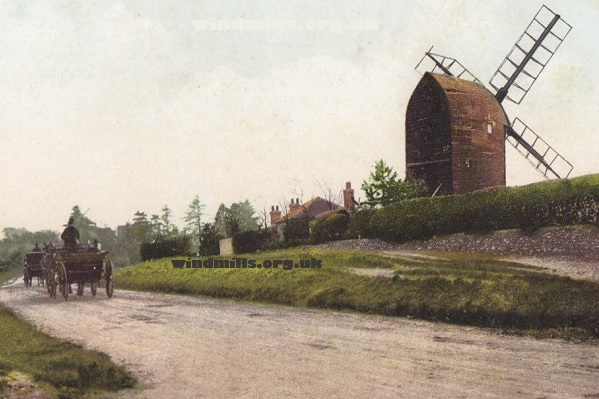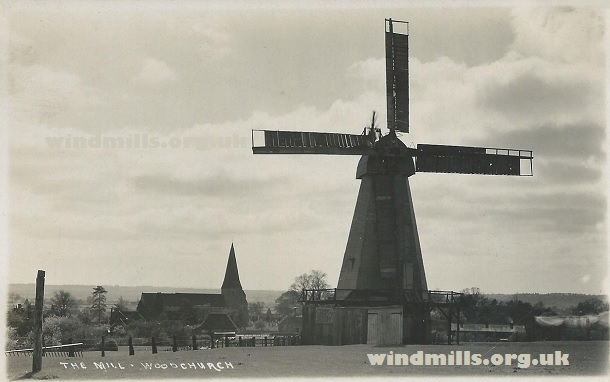
A vintage picture postcard of the smock mill in Woodchurch, Kent, c.1925.
Although, a mill stood at least from at least 1729, the smock mill, we can see in Woodchurch, near Ashford, in Kent, south-east England is believed to date back to the early ninetenth century. Indeed up until 1940 there were two mills on the site and these twin mills were known as the black (or upper) mill and the white (or lower) mill. The white mill that still exists to this day continued to grind corn commercially up until 1926 and over a great many years has been restored to near working condition.
Woodchurch Mill is an eight-sided, four-storey smock mill built on a single-storey brick base. It has a Kentish-style cap and is winded by a fantail. The mill once drove three pairs of millstones and was used for grinding corn.
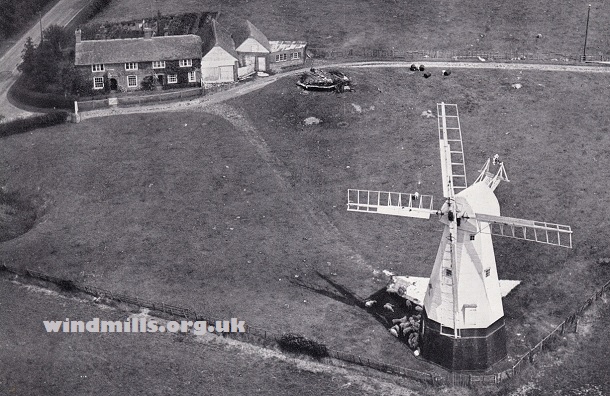
An aerial photograph of Woodchurch smock mill in 1952.
The mill is now owned by Ashford Borough Council and is currently open on Sundays and Bank Holidays between Easter and the end of September, from 2pm to 5pm.
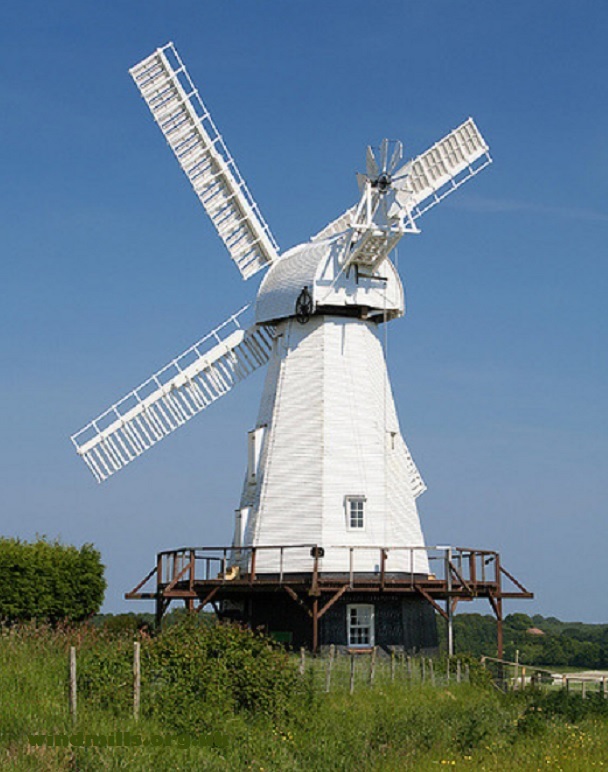
The white smock mill in Woodchurch in its fully restored state. One source dates this mill to 1820.
